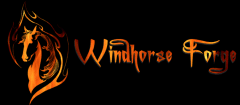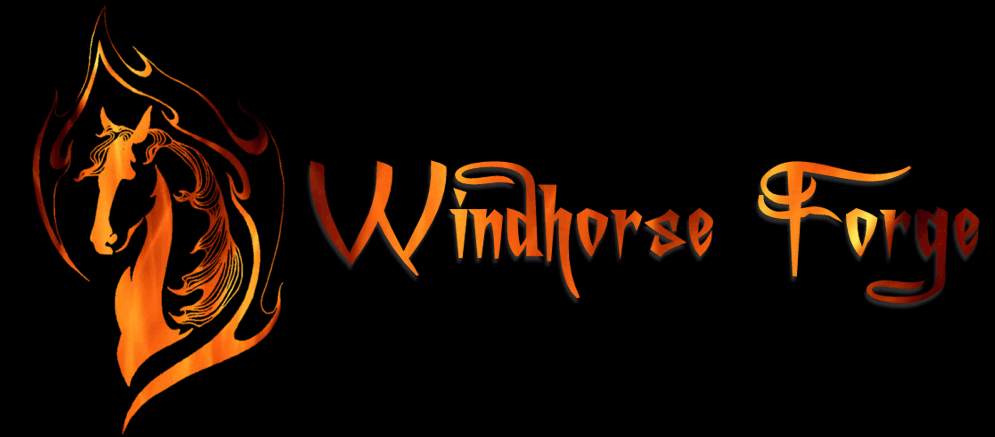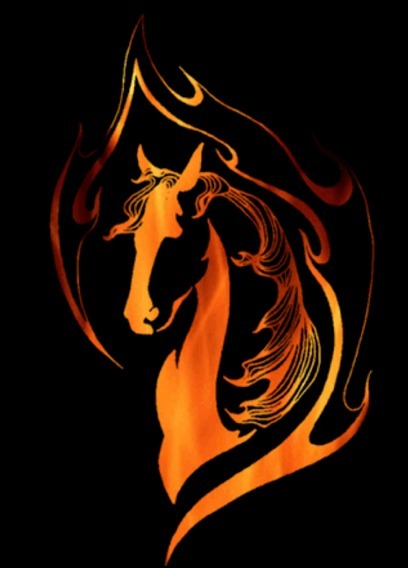
The Windhorse is an auspicious symbol in Tibetan culture symbolizing “the cardinal directions and a symbol of the idea of well-being or good fortune”. Horse is one of my spiritual allies and also symbolizes the strength, courage, and perseverance of the work I do as a woman bladesmith.
When I thought making my logo I reached out to my dear friend Nalisha Estrellas to create a beautiful image that represents the power and strength of the Windhorse. Her interpretation of what I wanted was absolutely perfect, a beautiful horse with a flame surrounding it. That same fire that burns over the gems of the Windhorse’s back, that same fire that ignites the soul of my work and lights my forge to create my beautiful knives.
Check out Nalisha’s incredible art on her website and the beautiful illustration she made that is now my maker’s mark for Windhorse Forge:
http://www.artbynalisha.com/blog/2022/6/23/ninas-windhorse-design

Transcipt of “Lungta” from: https://www.geocaching.com/geocache/GC59T94_lung-ta-the-wind-horse
Lungta (རླུང་རྟ་, Wyl. rlung rta or ཀླུང་རྟ་, klung rta) literally ‘windhorse’.
A mythical Tibetan creature symbolizing the inner air or wind of the body
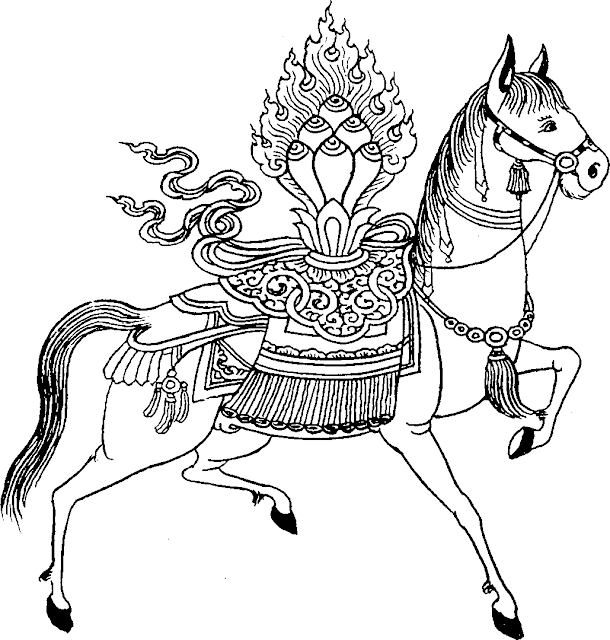
In Prayer Flags Wind Horse carrying the “Wish Fulfilling Jewel of Enlightenment”, it represents good fortune; the uplifting life force energies and opportunities that makes things go well. When one’s lung-ta is low obstacles constantly arise. When lung-ta is high good opportunities abound. Raising Wind Horse prayer flags is one of the best ways to raise one’s lung ta energy.
Lung ta (windhorse) can be described on several levels:
- Outer – a mythical Tibetan creature
- Inner – positive qualities such as ‘good luck’
- Secret – the space element (one of the five elements)
Most secret – the inner air or wind within the body
Outer Level: Mythical Creature
On the outer level, the lungta is a mythical Tibetan creature from pre-Buddhist times that combines the speed of the wind and the strength of the horse to carry prayers from earth to the heavens.
Inner Level: Positive Qualities
Lungta is associated with positive energy or ‘life force’ and with ‘good luck’. It is both the subduer of evil and the vehicle of enlightenment.
The lungta symbol is often depicted on prayer flags, which are flown to generate merit and increase one’s life force. Lungta prayer flags typically display a tiger, a snow lion, a garuda, and a dragon, (the four dignities) with a lungta in the center. Certain lungta prayers also refer to these four symbols.
The tiger, snow lion, garuda, and dragon are ancient symbols of the qualities of lungta that originate with pre-Buddhist Tibetan and Chinese astrological traditions. Generally, they symbolize the fearlessness and resilience of lungta. (See Shambhala: The Path of the Warrior.)
Secret Level: The Space Element
At a deeper level, the lungta and the four dignities symbolize the play of the five elements, out of which all phenomena are formed. The lungta symbolizes space, the ground of all manifestation; in fact, in astrological texts lung ta is sometimes spelt ཀློང་རྟ་, longta, ‘horse of space’. The tiger symbolizes the wind element; the snow lion, earth; the garuda, fire; and the dragon, water.
Traditionally, they are set out in the same configuration as the five-part mandala used for the five buddha families, as can be seen in lungta prayer flags.
Most Secret Level: The Inner Air or Wind
In Tibetan Buddhism, the mind is seen as being dependent on, or mounted on, the subtle energy or inner air or wind within the body. This subtle energy is therefore called the ‘windhorse’, in Tibetan lungta. Whether the wind-horse is strong or weak determines whether positive or negative tendencies dominate the mind. On an everyday level, the windhorse is also very much linked to what is commonly known as ‘good luck’.
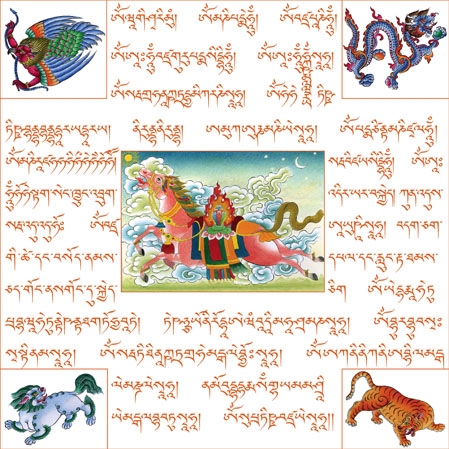
Lung ta prayer flags are of square or rectangular shape, and are connected along their top edges to a long string or thread. They are commonly hung on a diagonal line from high to low between two objects.
More history and information can be found about the Windhorse here: https://en.wikipedia.org/wiki/Wind_Horse
